Enormous media coverage surrounds today’s NFL draft. It wasn’t always that way. Bob Griese told us he didn’t know the draft had taken place – even though he was the fourth-overall pick. Players from The Game before the Money era often learned their pro football destinations through newspapers, college coaches, and friends. It apparently wasn’t until the 1970s that teams called players during the draft.
YEARS BEFORE THE DRAFT
Chaos often surrounded acquiring talent before the draft existed. Don Hutson signed with both the Green Bay Packers and the NFL’s Brooklyn Dodgers after his college career at Alabama ended. NFL President Joe Carr awarded Hutson to the Packers since the Packers mailed their contract just a few minutes before the Dodgers. Hutson helped lead the Packers to 3 NFL titles and still holds NFL receiving records 8 decades later.
Photo of: Don Hutson.
The Philadelphia Eagles and the NFL’s Brooklyn Dodgers both highly desired Minnesota All-American Stan Kostka in 1935. Kostka deftly fueled a bidding war, signing a sparkling $5,000 contract with Brooklyn. Philadelphia owner Bert Bell didn’t like being outbid, and scoffed at a rookie’s salary rivaling superstar Bronko Nagurski’s. Bell proposed a player draft to keep rookie salaries down, and to give lower-tier teams a better chance at top-tier talent.
Bell’s draft proposal passed, and the NFL held its first draft in 1936. The Eagles selected Heisman winner Jay Berwanger, who opted for a higher salary in foam-rubber sales. The Boston (now Washington) Redskins selected Riley Smith.
The draft succeeded in keeping salaries down. Smith signed for $250/game, far below Kostka’s deal. The draft, however, failed to balance out talent. The Packers, Giants, and Bears won 7 out of the last 9 championships before the draft, and also won 7 out of the first 9 championships after the draft’s initiation. Curly Lambeau apparently scouted players at bowl games, as Nolan Luhn and Bob Kahler told us he approached them after the Orange Bowl and the Rose Bowl, respectively. Other teams didn’t scout as well, some drafting ineligible players who were still in college.
The first NFL draft netted 4 Hall of Famers – Wayne Millner, Tuffy Leemans, Dan Fortmann, and Joe Stydahar. Brooklyn selected coaching icon Paul “Bear” Bryant in the fourth round.
NFL DRAFTS AFRICAN AMERICAN ATHLETES
Pro football integrated in 1946, with Kenny Washington and Woody Strode playing for the Los Angeles Rams, and Hall of Famers Bill Willis and Marion Motley suiting up for the Cleveland Browns of the AAFC. They all, however, signed as undrafted free agents. The Chicago Bears made George Taliaferro the first African American to be drafted in 1949. “I thought it was the most incredible thing that could happen,” Taliaferro said when interviewing for The Game before the Money.
Football Card of: George Taliaferro.
Taliaferro signed with the AAFC’s Los Angeles Dons before the NFL draft, however, and honored that contract. He earned AAFC Rookie of the Year honors. The NFL later held a dispersal draft of AAFC players after the AAFC’s demise, and Taliaferro was the second-overall pick. The Lions snatched future Hall of Famer Lou Creekmur in the dispersal draft.
THE BONUS PICK
The NFL instituted the “Bonus Pick” in 1947. Paul Hornung explains in The Game before the Money: “First pick of the draft in those days was a bonus pick. Each team put their name in a hat, and you drew them out. Fourteen teams; here comes the bonus pick. After that the draft starts in predetermined order: 1, 2, 3, 4. Next year, the thirteen remaining teams were eligible for the bonus pick.”
Photo: “The Golden Boy” at Notre Dame.
Congress investigated the NFL, among other pro sports leagues, for antitrust violations in the 1950s. Congress declared the “Bonus Pick” too close to a lottery and suggested the NFL halt the practice. The NFL did so after the 1958 draft, conveniently after each team had selected one “Bonus Pick.”
The Congressional pressure demonstrates societal changes. What was unacceptable in 1958 is now celebrated as part of today’s NBA draft. Teams covet “Lottery Picks” and sports fans eagerly watch the “NBA Draft Lottery.”
AMERICAN FOOTBALL LEAGUE EFFECTS
The American Football League held their first draft in 1960. Some players were drafted by both leagues, and the two leagues warred over players.
Teams used scouts as “babysitters” to protect their draft interests. The babysitters would travel to a prospective draft pick’s college, wine and dine them, and do their best to keep the athlete from signing with the rival league. Walt Garrison said a Rams scout took him and his friends out to dinner, bought him a pair of boots, and then stayed in a hotel room with him during the NFL draft. The scout left the instant the Cowboys beat the Rams in drafting Garrison.
Tony Lorick signed with the Baltimore Colts, although he told the The Game Before the Money that Colts hesitated in drafting him. The Colts heard a rumor that Lorick had already signed with the Oakland Raiders as their first-round pick. Unsurprisingly, Raiders owner Al Davis proved to be the source of the rumor.
Davis wouldn’t lose out on Fred Biletnikoff the next year, however. He signed Biletnikoff on the field at the Gator Bowl, national television cameras all around. Fred’s Florida State team had just defeated Oklahoma. It wasn’t the first time Davis signed a Hall of Famer on the field. He signed Arkansas standout Lance Alworth to a contract beneath the goal posts following the 1962 Sugar Bowl.
Photo: Biletnikoff flying high in the Gator Bowl.
The shenanigans surrounding Chiefs legend Otis Taylor depict the lengths babysitters would go to protect draft interests. A group of NFL scouts took Taylor and several other draft prospects to a motel in Richardson, Texas, checked in under assumed names, and hoped to keep the draft picks there to keep them from signing with the AFL. A Chiefs scout close to the Taylor family learned Taylor’s whereabouts, and tried to sneak into the hotel as a journalist, using a camera as part of his disguise. An NFL scout recognized the Chiefs scout, and subsequently called police reporting the Chiefs scout as a suspicious person. Despite threats from the police, the Chiefs scout snuck Taylor out of the NFL scouts’ motel at 3:30 in the morning, promising a new Ford Thunderbird.
The battles changed the course of destiny for teams. Imagine Taylor playing alongside Hall of Famer Tommy McDonald, catching passes from Eagles quarterback Sonny Jurgensen. Picture Hall of Famer Ron Mix next to Jim Parker on the Baltimore Colts offensive line. The Bills won back-to-back AFL titles after losing Hall of Famers Carl Eller and Paul Warfield to the NFL. Would the championship run have lasted longer and into the Super Bowl era?
The two drafts provided leverage to rookies drafted in both leagues. Some players, like Joe Namath, Donny Anderson, and Jim Grabowski, negotiated huge contracts. Namath famously collected over $400,000, Anderson scored $600,000.
Photo: Namath and the Bear.
Not all players based decisions on money. Garrison said he wanted to stay close to his Texas roots, and preferred the Dallas Cowboys to the Kansas City Chiefs. Eller enjoyed Minnesota, and was happy to sign with the Vikings rather than create a bidding war between Minnesota and Buffalo.
The two leagues merged in 1966. Grappling over draft picks stood as a large contributing cause.
SUMMARY
The draft now gets dissected and diced in ways Bert Bell would have never imagined. The NFL Combine tests prospects where a mere index card asking for player stats in the 50s and 60s served the same purpose. Bob Griese learned the Dolphins drafted him when an assistant coach off-handedly mentioned it while crossing paths in the hallway. Now players sit by the phone with their agents and friends, watching the draft unfold on ESPN.
Some teams built their dynasties and legends around drafts. The Steelers 1974 draft produced Lynn Swann, John Stallworth, Jack Lambert and center Mike Webster – all Hall of Famers. The Packers scored Forrest Gregg, Bart Starr and Bob Skoronski in 1956, then Jim Taylor, Ray Nitschke, and Jerry Kramer in 1958. The Bears netted Gale Sayers and Dick Butkus with back-to-back first round picks in 1965. Dallas selected Roger Staubach, Bob Hayes, and Mel Renfro in 1964.
Staubach quarterbacking the Navy Midshipmen.
Drafts remembered for being especially rich include the 1983 draft. Known for producing legendary quarterbacks John Elway, Dan Marino, and Jim Kelly in the first round, Hall of Famers Bruce Matthews, Darrell Green, Eric Dickerson and Richard Dent also entered the league. The 1957 draft launched 9 Hall of Famers, including 4 of the first 8 picks. The 1964 draft contained a record 10 Hall of Famers. Many declare the 1989 draft the best modern draft. Four of the first five picks – Troy Aikman, Barry Sanders, Derrick Thomas, and Deion Sanders – all found their way to Canton.
Bert Bell’s son Upton tells the story of how his father came up with the idea of the NFL Draft and gives details about the discussions of the first draft at league meetings, as well as the first draft itself, in The Game Before the Money Podcast. You’ll learn what legendary coach was selected in the first NFL Draft.
READ THE NFL DRAFT STORIES OF NFL LEGENDS IN THE GAME BEFORE THE MONEY.
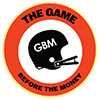

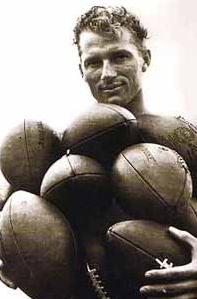
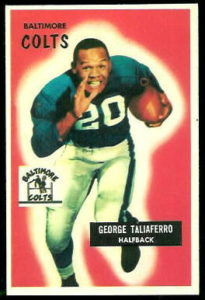
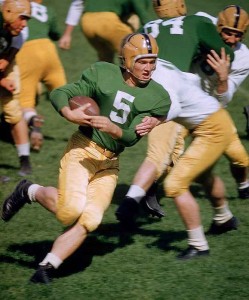
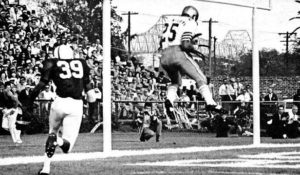
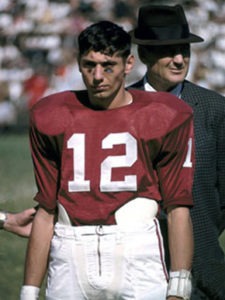
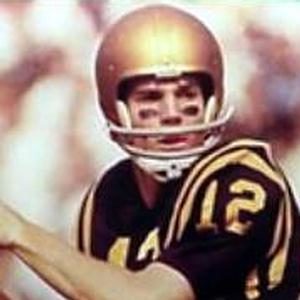
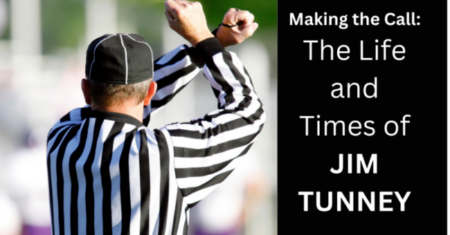
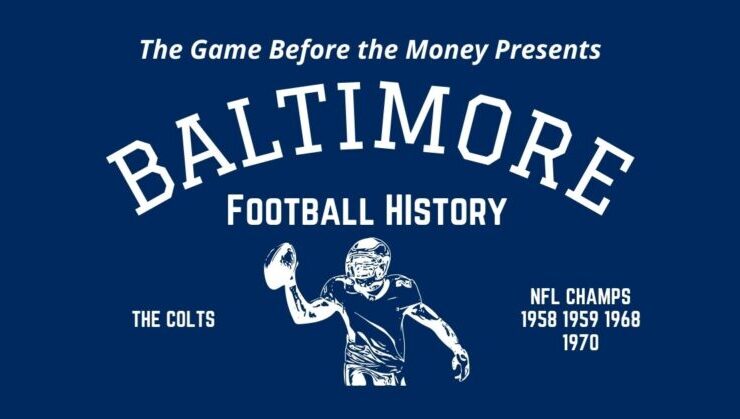
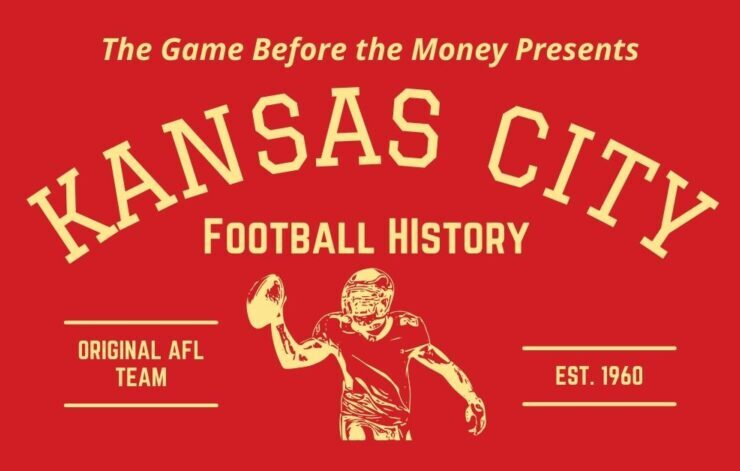
Permalink
Permalink
Permalink